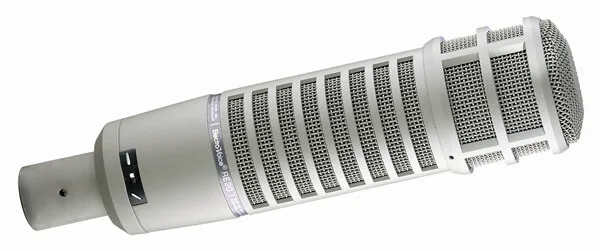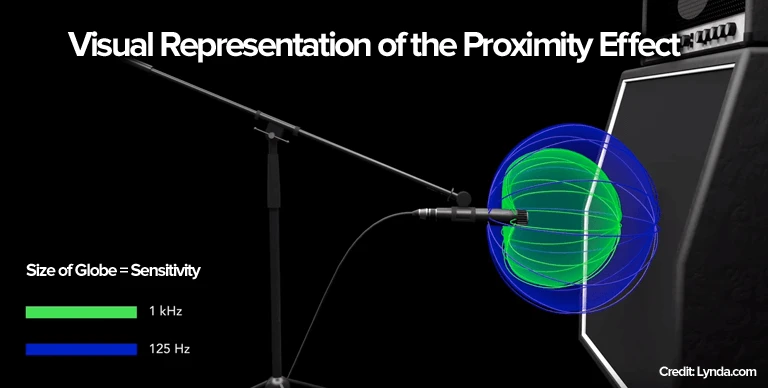
For studio engineers involved in tracking and mixing, the eternal war wages on. We want our final results nice and warm in the low and mid-range of the frequency spectrum, but it’s always easy to venture off too far and end up with muddy results that lack clarity and punch.
A phrase you’ll often hear is “we’ll fix it in the mix.” No, just no. The axiom you want to live by is:
Get it right at the source.
This means that you want the raw, dry recording to be as close to the final product as possible. The problem arises due to horrid recording environments.
Because most hobbyists and even “professional” studios (a.k.a. hobbyists who charge other hobbyists money) don’t even have the first clue about how to use acoustic treatment to tame their rooms, they go straight for the cheap solution… close miking.
This is an attempt to record the main source louder to drown out the reverbs and flutter echoes of the room or other instruments by moving the microphone closer to the source, whether that be an acoustic guitar or singer’s mouth.
But when you’re close miking and take it too literally, you’re bound to encounter potentially one of your new favorite recording tricks or what could be your worst recording enemy… the microphone proximity effect.
Whether you realize it or not, you’ve heard the proximity effect in microphones your entire life. It’s exploited by a specific group of professionals in the music industry every day, all day.
What is the Proximity Effect?
Let’s break it down in laymen’s terms and then we’ll get technical about it as well for the professionals.
General Explanation
You know how radio DJ’s have “that sound” to their voice, where their voices sound very full, prominent, and domineering? It’s a nice warm sound, full of bass that sounds confident and comforting.
That is the effect, and they use (abuse?) it to the fullest extent. It sounds great for solo vocals, especially in rap, or for singers in the bass register.
Not all (but most) microphones exhibit this effect, and those that do produce it to varying degrees. If you’re interested in this type of sound for podcasting or as a radio announcer, then check out the tried and true microphone that acts as the proximity effect standard in the industry, the Electro Voice RE-20:

What happens is that the closer the source and microphone are together, starting about about 12 inches apart, the more sensitive the diaphragm becomes towards the low-end of the frequency spectrum. At about 100 Hz and lower, you begin to receive a boost that can climb as high as 20 decibals!
This happens due to how sound pressure levels (SPL) decrease rapidly over space due to the inverse square law. The closer you get, the higher the SPL’s are and lower frequencies have far more energy than the upper registries.
But imagine what happens when you don’t realize you’re picking up a small amount of this bass boost on every track, or you do realize it and think it sounds great because you’re listening to each take in solo mode?
When you combine three takes of guitar, two vocals, and then add them into the mix with the kick drum and bass guitar, guess what happens? You have a boomy, muddy mess on your hands due to the accumulation of this little bit of extra bass on each track.
And to fix this requires a ton of equalization work that just damages the good part of the source until you have a tinny, thin, awkward result.
This technique or mishap can be a blessing or a curse, respectively, if you know how to harness it for the proper application. Fattening up a vocal for full frequency spectrum depth and gravity is one of the acceptable applications.
You don’t want to employ this technique on more than one track, really, in a full band mix. You gain more freedom with it the more sparse the mix is, but even then you should choose the prominent instrument (including vocals) and just go with it.

Technical Explanation
Any recording device with a directional pickup pattern (or polar pattern or directionality), which is all microphones, is subject to an inverse square relationship with the source of the sound it is recording.
The closer it gets, the exponentially more sensitive it becomes to bass response. This is due to the construction of microphones based on ports, which are used to create the pickup patterns.
Note: All microphones except omnidirectional mic’s will exhibit this increased bass response. However, multi-pattern condensers that allow you to change the pickup pattern may feature an omnidirectional option, but it will still be affected by proximity to the source due to it’s dependence on dual ports.
While it varies from microphone to microphone, the low-end boost can be as as much as 15 db and more in amplitude and as high as 100 Hz in the frequency spectrum. Many of the best dynamic microphones will even design their frequency response around this effect.
It should be noted that the proximity effect is reduced when the amplitude of the source wave is lower and/or it is being recorded off-axis from perpendicular to the diaphragm. This is because it is directly proportional to the sound pressure, which is based on the amplitude and frequency and is angularly dependent.
All of the above are based on the phase difference. This refers to the wavelength that fits within the width of the diaphragm itself, which is to say that higher frequencies exert a higher phase difference due to a shorter wavelength.
This is largely why bass frequencies can exert the proximity effect without eating up all of your headroom during recordings, because the wavelengths are much longer and thus the phase difference is smaller. It should also be stated that microphones feature a typical 6 db per octave bass roll-off to further combat this, while many have switches to activate an even deeper roll-off.
Video Explanation
This video from the audio university explains it well:
The concept is much easier to understand with these fantastic graphics overlays.
Why Use the Audio Proximity Effect?
As previously mentioned, many people use it in to create a deeper and more confident sounding vocal, especially in hip hop or in talk radio. But the uses extend beyond that simple application.
Another use is during live performance. You can purposefully situate the microphone closer to the sound source and then use equalization to then reduce the increased bass response.
This then serves to protect your sound from bass bouncing around a poor acoustic environment, since any unintended bass sounds approaching the mic, even those rumbling up the mic stand, will already be decreased in volume and then will be EQ’d even lower.
So not only do you defend from stray bass sounds, but you can reduce the handling noise of a vocalist with a hand-held microphone, someone kicking a mic stand by accident or when moving one, and even any bass oriented feedback issues that might occur.
Take care when recording electric guitar. The E-string can create a big boom around 80 Hz. The same goes for acoustic guitar with the added possibility of creating a complete mess by placing the mic too close to the sound hole.
For bass guitar, kick drum, and other bass instruments it can be a welcomed effect but only at the risk of harming the intelligibility of the sound by drowning out the upper harmonics. With vocals, you can go too far and harm the intelligibility of the speaker’s enunciation as well.
The microphone proximity effect exhibits the most strength on Figure-8 pickup pattern microphones, followed by the most common cardioid pickup pattern. It’s safe to say that most people are using cardioid mics, so be careful.
If you want to avoid having this effect occur at all then you should use an omnidirectional microphone, but not one where you’re allowed to select that option from many other directionality choices.
These multi-pattern microphones will still exhibit some of the effect even on a non-cardioid pickup pattern, albeit at smaller amounts associated with that pickup pattern.
And That’s the Microphone Proximity Effect
Dodge it altogether with an omnidirectional mic or make it the most pronounced by using a cardioid (most common) or figure-8 mic. It’s a great tool for many types of professional vocal jobs, especially in rap and radio broadcasting.
It can sabotage your recordings if you aren’t aware of the cumulative effect of bass build-up. It’s subtle and will sneak up on you, and while equalization can salvage your recordings to a degree, it’s not without sacrifice.
The goal is always to “get it right at the source.” And that means don’t take close miking too literally. Maintain at least 12 inches of distance between your source and your microphone unless you specifically intend to draw upon the bass response of tight proximity.
To put it in the simplest terms possible, if you’re aware of the microphone proximity effect, you can use it to great effect in your audio productions, especially in talk radio, podcasting, and radio DJing.